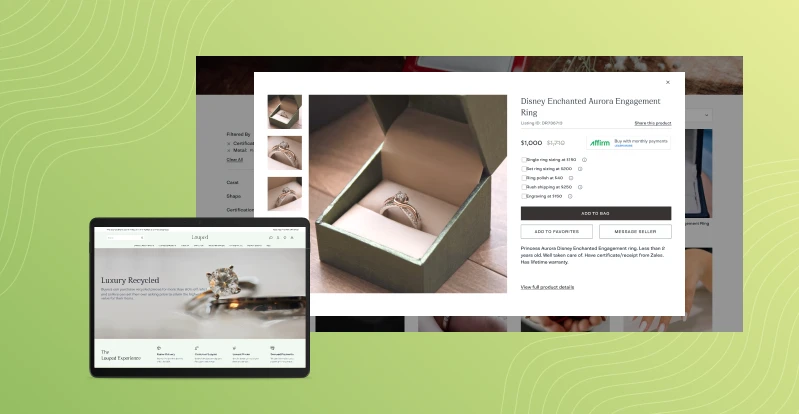10 Key Things to Consider Before You Build Your Shopify Store

Picture this: You have a stunning online store that’s visually appealing, so fitting to your business needs like a hand to the glove, and performs flawlessly. Sounds magnificent, isn’t it? With custom Shopify development services, you could transform your dream online business and launch it in the UK market.
Popular brands in the United Kingdom use Shopify to maximise outreach, stand apart in the domain, and offer customer-focused shopping experiences. This amazing eCommerce platform has been a great companion of retailers and wholesalers in the UK.
There is a catch here: Choosing Shopify to build your next online store doesn’t automatically guarantee success.
Shopify development project is a strategic move for your business that aligns with your goals and the target audiences’ needs. It’s about ensuring every module or functionality developed with every detail follows the plan and creates incredible online shopping experiences as expected.
Let us walk you through the 10 key considerations to build your next Shopify eCommerce store. We hope you’ll have everything you need to create a successful Shopify store.
10 Considerations to Build Shopify Store
The Shopify experts in UK have given us a list of ten crucial points to consider to strategise Shopify development in a better way.
1. Know Your Purpose and Audience
Get a clear picture in your mind for whom you are launching this store. Will it be a trendy online fashion store for young professionals in London? Or maybe you’re a family-owned business selling homemade jams to a loyal customer base in Yorkshire?
Understanding your purpose will shape everything—from the look and feel of your store to the features you prioritise. And when it comes to your audience, dig deep. What do they want? What problems are you solving for them? Aligning your store with your goals and audience is the foundation for success.
2. Pick the Right Shopify Plan
Shopify offers several plans, but not all of them will suit your needs. For example, a small startup selling bespoke jewellery might find the Basic Shopify plan perfect, while a growing brand with a large inventory may need more advanced features like detailed reports and extra staff accounts.
Take a moment to consider what your business needs today and where you want to be in the next year or two. Don’t forget to budget for extras like transaction fees and currency conversion costs—especially if you’re selling internationally. Planning ahead can help you avoid surprises down the road.
3. Create Essential Pages
Just like any physical shop, it needs key information to help customers feel comfortable and informed. Here are the essential pages you should include:
- Home Page: This is your shop’s welcome mat! Your platform’s homepage is supposed to reflect your brand’s personality. You’ve got to add appeal and brand essence to it. From the business perspective, engage the audience with creative textual and rich content. You can also highlight special offers and best-selling products.
- Product Pages: Go beyond basic descriptions—tell the story behind your products! Include multiple high-resolution images from different angles and add customer reviews to build trust and encourage purchases.
- FAQs: This page acts as your customer service assistant. Include the most common questions from your customers on this page. It must encompass queries related to shipping, returns, and product details. The aim is to deliver crucial information to customers on hand.
- Shipping and Returns Policies: Clearing customers’ doubts regarding the shipping costs and ETA is the key. Our eCommerce experts also recommend mentioning a note for the return process with the timeline.
- About Us and Contact Us Pages: Share your story! Use the About Us page to convey your mission and what makes your products unique. You can also share your brand’s journey to create instant customer empathy. Sharing your feelings will only bring the target audience closer to your brand.
4. Focus on the Mobile-First Approach
Modern customers are inclined to do online shopping from their smartphones. Believe it or not, the mobile experience remains the priority. This is why your Shopify store design needs to be responsive to perform flawlessly on all devices. It is a make-or-break aspect of your next online store.
Test everything on a smartphone, from browsing products to completing a purchase. Your menus must be crystal clear and fully functional. Buttons should be appealing in colour to help users navigate the journey. The checkout functionality must be secured and faster to let customers make effortless payments and finish the purchase.
5. Make Payments Easy
A payment process implemented without thinking of customer experience is destined to turn into a nightmare. Imagine a buyer purchasing products worth hundreds of pounds finds your payment process to be complex, vague or even insecure. He or she will instantly abandon the cart and will look for other eCommerce platforms. Using unpopular payment gateways can also result in the same.
Credit to Shopify’s eCommerce platform, as it offers multiple payment gateways that are popular in the UK and on an international level. You can offer multiple payment methods, including credit and debit cards, with the buy-now-pay-later option, enabled via Klarna, a platform providing this service.

6. Enhance Your Shipping and Fulfillment Process
Online shoppers in the UK expect faster, quicker, and low-cost (often free) deliveries. This directly impacts the overall experience even before using the products. Leverage the most popular shipping carriers such as Royal Mail and DHL. Integrate your Shopify store with these shipping carriers to deliver what your customers expect.
The best thing would be to offer free shipping over a certain amount. This tip will help you raise the average cart value. Show ‘Items customers often bought with this product’ to drive their actions in buying additional items and avail of free shipping offers.
7. Stay Legal and Secure
Compliance with the eCommerce laws of the United Kingdom and GDPR for data protection and VAT regulations is simply non-negotiable. Your brand’s credibility and reliability in the market are safe until you are penalised for not following the guidelines and regulations.
To win over the trust of your customers, enable Shopify’s SSL certificate. This will portray that it is safe and secure to browse and make financial transactions on your platform. Also, keep your privacy policy, terms, and conditions clearly visible for customers to access. These are small but crucial trust-building efforts.
8. Add the Right Features with Apps
Shopify’s app store is packed with tools to enhance your store. Want to improve SEO? Add customer reviews? Or offer loyalty rewards? There’s an app for that. But here’s the trick: don’t go overboard.
Choose apps that add real value to your store and your customers. Too many apps can slow down your site and create clutter. Start with essentials like marketing automation or inventory management, and expand as needed.
9. Invest in SEO and Marketing
SEO is essential to boost your search engine visibility, which could drive direct customers to your store. Use Google Keyword Planner or Ubersuggest to identify the right keywords and use them in creating product listings.
Incorporate these keywords naturally into product titles, descriptions, meta tags, and blog posts if you have them. Regularly updating content not only keeps it fresh but also signals search engines that your site is active.
10. Test, Refine, and Launch
Your Shopify store should be polished before launch. Test every feature—navigation, search, checkout, and even load times. Invite a few trusted friends or customers to explore your site and give honest feedback. When you’re ready, consider a soft launch. Roll out your store to a smaller audience first, work out any kinks, and then go big. A strong launch sets the tone for your store’s success.
As composable and headless commerce specialists, we have worked with the country’s top brands to create comprehensive digital commerce experiences. As a partner, we will navigate you through all the complexities you might face and assist you in building the right solutions to promote your brand.
Conclusion
Custom Shopify store development is about creating an online experience that is not for you but for your customers. Your store experience and design must resonate with the right audiences to bring them closer to your brand. It also has to ooze the class and authenticity of your brand. The idea and aim have to be the same.
Building an online Shopify store must not be limited to bringing customers to your platform. It is about creating repeat customers. Shopify has the tools that empower you to achieve this dream. Whether you are an offline retail store owner in UK, Shopify can help you give that digital branding experience and visibility to boost sales.
Talk to a shopify development agency to discuss what is stopping you from growing your online store to the limits you dream of.




